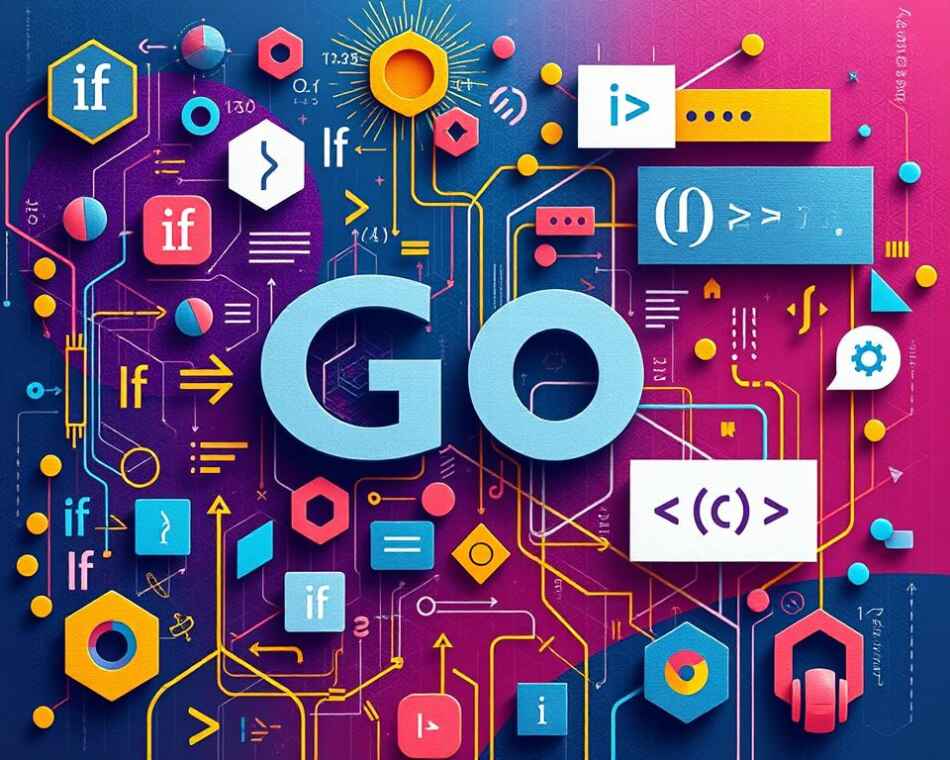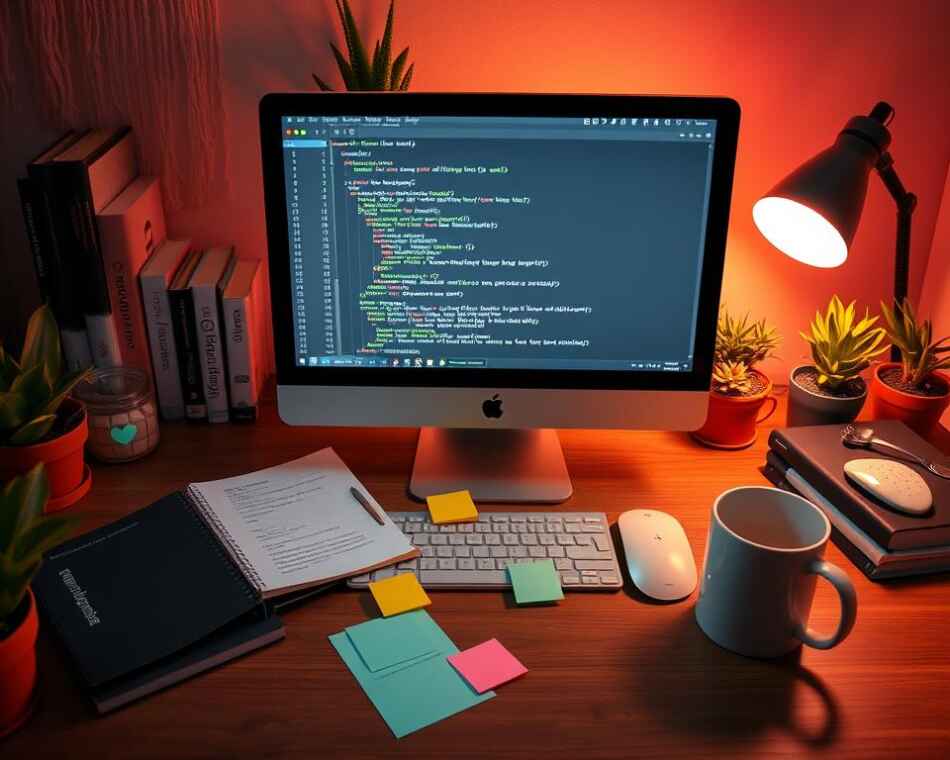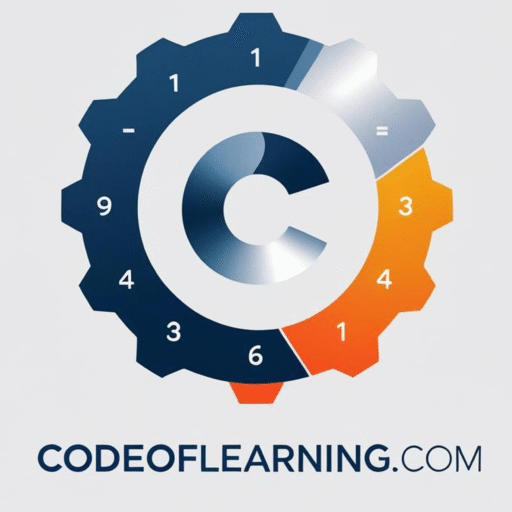Did you know 142,567 learners have started with Go programming through free tutorials1? This shows how popular Go (Golang) is becoming. It also shows the need for easy-to-use learning tools. If you love coding, I’m excited to help you start your Go journey.
Learn Coding Free: Starting with Go programming doesn’t have to cost anything. There are many free resources to learn the basics of this popular language. Sites like Codecademy, FreeCodeCamp, and Coursera have interactive lessons and exercises. You can learn at your own pace without spending a lot of money.
Beginner Coding Tutorials: It’s important to start with beginner-friendly tutorials for Go. Sites like Go Tour and The Go Programming Language have step-by-step guides. They cover the basics, like syntax and data types. YouTube channels like Go Tour and Golang TV also offer video tutorials on Go topics.
‘GO’ : Go, also known as Golang, was developed by Google in 2009. It’s a modern language known for its simplicity and performance. Go makes it easy to write clean code and build scalable systems. It’s a great choice for both new and experienced developers.
Go is an open-source language backed by Google. It’s gaining traction in the tech world. Big names like Apple, Amazon, and Spotify use Go for their work1. This shows why learning Go is key for new developers.
So, why is Go so attractive? It’s made for creating fast, reliable, and efficient software. It’s great for app development, web services, or cloud infrastructure. Plus, you can learn it for free online.
In this guide, we’ll look at free tutorials to start with Go. We’ll cover setting up your environment and writing your first code. With a 4-hour course and high learner satisfaction, you’ll have fun learning1.
Are you ready to start your Go programming adventure? Let’s explore why Go is becoming a top choice for cloud-native infrastructure and software development1. We’ll discover this powerful language together and help you become a skilled Go developer.
Introduction to Go Programming
Go, also known as Golang, is a programming language that’s becoming more popular. It was created by Google in 2007 and became open-source in 2009. Go is now a top choice for making scalable network services and web apps23.
What is Go (Golang)?
Go is a statically typed, compiled language that focuses on simplicity and efficiency. It supports concurrency through Goroutines and Channels, allowing tasks to run at the same time2. Go also has garbage collection, which automatically manages memory to prevent leaks2.
Why Learn Go?
Learning Go has many benefits for both beginners and experienced programmers. Its syntax is simple, making it easy to learn and use2. Go’s fast compilation times and ability to run on different platforms make it great for building efficient apps2.
Go’s Popularity in the Industry
Go’s popularity is growing fast. Big companies like Google, Uber, and Dropbox use it for large-scale systems and high-performance apps2. It’s great for solving complex problems and optimizing memory, making it a favorite among developers2.
Go is one of the fastest-growing and highest-paying programming languages in America. It offers great career opportunities for those who learn it well3. With a strong community and many third-party packages, Go is perfect for both beginners and professionals2.
Setting Up Your Go Development Environment
I’m excited to guide you through the Go installation process and coding environment setup. Let’s get started with this crucial step in your Go programming journey!
First, download Go from the official website. The installation process varies slightly depending on your operating system. For Linux, Mac, and Windows, you’ll find specific instructions to ensure a smooth setup4.
After downloading, install the package and set up your PATH environment variable. This step is vital for your system to recognize Go commands4. Once installed, verify your setup by running go version in your terminal5.
Next, configure your Go workspace. Two key environment variables to set are GOROOT and GOPATH6. Your workspace typically includes directories for executables, non-executable binaries, and source code6.
Choose a code editor that supports Go. Popular options include VSCode, GoLand, and Vim. These editors offer features that enhance your coding experience, making Go development more efficient.
To build and run Go programs, use these commands:
- Run a Go file: go run main.go
- Create an executable: go build main.go
- Name your executable: go build -o hello_world main.go5
With your environment set up, you’re ready to start coding in Go! Consider exploring online coding classes to further enhance your skills and understanding of Go programming.
Understanding Go Syntax and Basic Concepts
Go syntax is key to coding in this powerful language. It’s a compiled language, which means it’s faster than languages like Python7. Let’s explore what makes Go unique and efficient.
Variables and Data Types
In Go, variables are typed at compile time, making code more reliable. It has basic types like int, float, and string. It also has complex types like slices and maps7. Go’s type system is simple and efficient, making it a favorite among developers8.
Control Structures
Go has control structures like if, else, and for loops. These help manage how the program runs. A special feature is the ‘defer’ statement, which waits until the function ends7. It’s great for handling resources.

Functions and Packages
Go functions have a name, arguments, return types, and a body. It also supports anonymous functions for flexible coding7. Each package is in its own folder, keeping code organized7.
Go’s basics are solid for building efficient apps. It’s great for working with modern computers thanks to goroutines and channels8. As you learn more, you’ll get better at Go, including pointers and goroutines7.
Your First Go Program: Hello, World!
Let’s start with a classic “Hello, World!” program in Go. This simple program teaches you important basics and gets you ready for more coding.
First, make a new file with a .go extension. In Go, we start by saying we’re working in the main package. We also import the fmt package for handling input and output9.
Then, we write the main function, which is where our program starts. Inside, we use fmt.Println() to print “Hello, World!” in the console910.
Here’s a simple example of the code:
- package main
- import “fmt”
- func main() {
- fmt.Println(“Hello, World!”)
- }
This code shows you how to declare a package, import libraries, and define functions. These are key parts of Go programming911.
To run your program, you can use ‘go run’ for quick tests, ‘go build’ to make an executable, or try the Go Playground for coding online11.
As you get better, learn about formatting with Printf and how to handle errors. Go focuses on organizing code with packages, making it easier to reuse9.
Free coding tutorials often add more to this basic program. They might include user input or interactive apps. Feel free to try new things and keep learning Go1011.
Started with Go: Free Online Resources
Learning Go is now easier than ever with the many free coding tutorials online. I’ve found great resources to help you start your Go programming journey.
Official Go Documentation
The official Go documentation is a goldmine for beginners and pros. It has detailed info on the language and its standard library. It’s a must-visit for anyone wanting to learn coding for free12.
Interactive Go Tour
The Interactive Go Tour is great for those who like to learn by doing. It takes you through Go basics in four sections. Each section ends with exercises to help you understand better13.
Go by Example
Go by Example offers annotated example programs. It’s a great resource for Go projects. It’s perfect for those who learn better by seeing code in action14.
These free online resources meet different learning needs and levels. Whether you’re new to coding or want to improve, these sites are great. They let you explore Go programming without spending money.
Remember, the best way to get good at Go is to practice. Try out the code, experiment with examples, and look for more free tutorials to improve your skills.
Building Simple Projects in Go
I enjoy working on Go projects for coding practice. Go is great for beginners and experts because it’s easy to use yet fast15. Its popularity has grown a lot in recent years15.
For beginners, I suggest starting with these projects:
- Hello World: This classic program is key for new programmers15.
- Simple Calculator: Practice basic math in Go15.
- Guessing Game: Make a game that guesses a number between 1 and 10015.

These projects help you learn the basics and build confidence. As you get better, try more challenging Go projects15. The best coding platforms have lots of challenges to keep you interested.
Go is versatile and used in many areas. It’s popular for cloud and server apps, and it’s also used in AI and data science16. Many command-line tools are made in Go, making it a useful language to know16.
When picking Go projects, think about what you like and what you’re good at. Look for projects with active communities and real-world uses16. Some cool projects include making a web server, an email tool, or an AI bot16.
Go for Web Development
Go web development offers powerful tools for building robust applications. I’ll explore how to create web servers, work with APIs, and integrate databases using Go.
Creating a Basic Web Server
Setting up a web server in Go is straightforward. With just a few lines of code, you can have a server up and running. The net/http package provides everything needed for HTTP client and server implementations. Go’s simplicity shines in web development, offering excellent support for technologies like HTTP/2 and various databases such as MySQL, MongoDB, and Elasticsearch17.
Working with APIs
Go excels in API integration. Its robust support for JSON encoding and decoding makes working with RESTful APIs a breeze. I find Go’s standard library particularly helpful for handling HTTP requests and responses. The UK government chose Go for its HTTP infrastructure, noting its simplicity and safety for building performant I/O-bound applications17.
Database Integration
Database programming in Go is facilitated by the database/sql package. This package offers a generic interface for SQL databases, making it easy to work with popular options like MySQL and PostgreSQL. Go includes database support for MySQL, Postgres, Oracle, MS SQL, and BigQuery, among others, along with drivers for MongoDB and Elasticsearch17. The language’s efficiency in database operations is evident in projects like LensLocked, a photo-sharing application where users can sign up, create galleries, and upload photos18.
Go’s versatility in web development is showcased in various projects. For instance, websites like Hugo and messaging platforms like Mattermost are developed using Go, emphasizing the language’s speed and security features17. The “Web Development with Go” course, spanning nearly 40 hours of screencasts and a 700-page ebook, demonstrates Go’s capability in building complex web applications18.
Learn more about Go’s potential in web development and start building your next project with this powerful language.
Best Practices and Common Pitfalls for Go Beginners
Mastering Go is more than just coding. It’s about knowing the best practices and avoiding common mistakes. Here are some Go coding tips to help you write better programs.
Error handling is key in Go programming. The language makes it easy to handle errors well. This makes your code more reliable and prevents crashes19.
Optimizing code is also important for Go beginners. Knowing how to manage memory can greatly improve your program’s speed. Go has tools like pprof to help find and fix memory issues19.
One mistake beginners often make is misusing goroutines. Go’s concurrency model is great, but misuse can cause problems. It’s important to learn how to synchronize properly to avoid these issues19.
- Use gofmt for consistent code formatting
- Leverage Go’s concurrency features correctly
- Understand variable scope to avoid unexpected behavior
- Use named return values for clearer code
- Employ the blank identifier (_) for unused variables
For more Go knowledge, check out Russ Cox’s blog for technical topics. Also, Dave Cheney’s blog offers practical tips on writing good Go code20. These resources can help you improve and avoid mistakes as you learn Go.
Conclusion
I’ve taken you on a journey through the world of Go programming. I hope you’re excited to start your coding career. Go has grown a lot since its debut in 2009 and open-source release in 201221.
This powerful language has become a favorite in software development. It jumped to the 5th most loved programming language in 202021.
Go’s popularity isn’t just about love – it’s also about money. Go developers are among the highest paid, with a median salary of $74K21. Big names like Google, Netflix, and Dropbox use Go, showing its real-world value21.
It was born out of necessity at Google, where server programs can have tens of millions of lines of code22. It aims to boost productivity and scalability in large projects.
As you build your Go programming skills, remember that practice is key. Start small, like the early Go test suite that used a simple shell script23. Over time, you’ll grow just like Go’s testing framework did, evolving into more complex systems23.
With Go’s support from major cloud platforms like AWS and GCP, your coding career in cloud-based programming looks bright21. Keep coding, keep learning, and watch your software development future unfold with Go!
FAQ
What is Go (Golang)?
Why should I learn Go?
What are some popular resources for learning Go?
How can I set up my Go development environment?
What are some basic concepts in Go syntax?
How can I build projects to practice Go?
How can Go be used for web development?
What are some best practices for Go beginners?
Source Links
- https://www.codecademy.com/learn/learn-go – Learn Go | Codecademy
- https://www.geeksforgeeks.org/go-programming-language-introduction/ – Go Programming Language (Introduction) – GeeksforGeeks
- https://www.geeksforgeeks.org/introduction-to-go-programming/ – Introduction to Go Programming – GeeksforGeeks
- https://madushaprasad21.medium.com/setting-up-your-go-environment-5674bea3cd89 – Setting Up Your Go Environment
- https://dev.to/willvelida/setting-up-our-go-development-environment-45jk – Setting up our Go Development Environment
- https://medium.com/@fsufitch/go-environment-setup-minus-the-insanity-b872f34351c8 – Go Environment Setup, Minus the Insanity
- https://medium.com/@manus.can/learn-golang-basic-syntax-in-10-minutes-48608a315896 – Learn Golang Basic Syntax in 10 Minutes
- https://dev.to/ankitakanchan/an-introduction-to-the-go-programming-language-setup-syntax-and-basic-concepts-53gh – An Introduction to the Go Programming Language: Setup, Syntax, and Basic Concepts
- https://www.golang-book.com/books/intro/2 – Your First Program — An Introduction to Programming in Go
- https://www.digitalocean.com/community/tutorials/how-to-write-your-first-program-in-go – How To Write Your First Program in Go
- https://golangbot.com/hello-world-gomod/ – Hello World
- https://www.freecodecamp.org/news/best-resources-to-learn-golang-for-free/ – Best Free Resources to Learn Golang – Go Coding Courses
- https://go.dev/learn/ – Get Started – The Go Programming Language
- https://go.dev/doc/tutorial/getting-started – Tutorial: Get started with Go
- https://medium.com/@romulo.gatto/basic-go-projects-for-beginners-542739d0eed7 – Basic Go Projects for Beginners
- https://www.geeksforgeeks.org/golang-project-ideas/ – Top 10 Golang Project Ideas with Source Code in 2024 – GeeksforGeeks
- https://go.dev/solutions/webdev – Go for Web Development – The Go Programming Language
- https://www.usegolang.com/ – Web Development with Go
- https://codefinity.com/blog/Golang-10-Best-Practices – Golang 10 Best Practices
- https://medium.com/@crusty0gphr/the-best-resources-for-learning-golang-a94b5cc75f53 – The Best Resources for Learning Golang
- https://www.freecodecamp.org/news/what-is-go-programming-language/ – What is Go? Golang Programming Language Meaning Explained
- https://go.dev/talks/2012/splash.article – Go at Google: Language Design in the Service of Software Engineering
- https://atlasgo.io/blog/2024/09/09/how-go-tests-go-test – How Go Tests “go test” | Atlas | Manage your database schema as code

